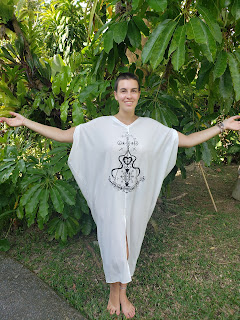Pèpè, Secondhand clothes and the unforeseen consequences
In the light of The True Cost documentary, here an article I shared with you 2 years ago when I first made it back to Haiti.
The foreign "Pèpè" has put thousands of Haitian tailors out of work. The solution to the guilt that comes with our over-reliance on cheap, unsustainable clothing isn't to donate it once we tire of a garment, but to consume less and own less in the first place.
In Haiti, pèpè may refer to secondhand clothes that are commonly worn by its population. These clothes are usually sent from the United States. The Haitian textile industry has suffered due to the widespread popularity of pèpè. There have even been discussions about banning the import of pepe.
The import of pèpè began in the 1960s, during the Kennedy administration, leading to the moniker "Kennedy clothes". Since the 1980s, hundreds of tons of pèpè has been imported, usually packaged in huge bales. The clothes are so affordable, that a used boy's t-shirt from the United States could be sold for as little as thirteen cents in Haiti.
The foreign "Pèpè" has put thousands of Haitian tailors out of work. The solution to the guilt that comes with our over-reliance on cheap, unsustainable clothing isn't to donate it once we tire of a garment, but to consume less and own less in the first place.
In Haiti, pèpè may refer to secondhand clothes that are commonly worn by its population. These clothes are usually sent from the United States. The Haitian textile industry has suffered due to the widespread popularity of pèpè. There have even been discussions about banning the import of pepe.
The import of pèpè began in the 1960s, during the Kennedy administration, leading to the moniker "Kennedy clothes". Since the 1980s, hundreds of tons of pèpè has been imported, usually packaged in huge bales. The clothes are so affordable, that a used boy's t-shirt from the United States could be sold for as little as thirteen cents in Haiti.
How
do Haitians end up wearing American T-shirts with crude
slogans? It's a complicated story of capitalism, consumption, and
"charity."
Two
Haiti-based photojournalists, Ben Depp and Paolo Woods, set about
documenting the phenomenon. The resulting portraits of ordinary
Haitians, most of whom do not speak or read English, wearing t-shirts
with rude humor, political references, or other inappropriate or a contextual content. You can see the photos here.
The artist statement about the project explains how the international trade in used clothes has impacted the local community:
Port au Prince’s Fifth Avenue is a waterfront road, just off the harbor, where mountains of second hand clothes bake in the tropical sun. The market, Croix-des-Bossales, is where the slaves used to be sold. Now it is not strong men from Africa that the merchants receive, but containers loaded with skirts, pants and shirts from the US. These second-hand garments are called “Pèpè” and it is increasingly difficult to see a Haitian wearing something that has not been previously worn by an American.
A t-shirt produced for Wal-Mart in the sweatshops of Port au Prince will be sported by a Texan and then returned to the sender, who, at last, will be able to wear it. This back and forth gives us a peek into the workings of the globalization of the textile industry.
The majority of “Pèpè” that arrive on the island have been donated by Americans to charities and collection centers, rejected by Thrift shops, and have gone through the sorting warehouses run by Haitians in Miami that discard the winter clothes and other unmarketable items from the lot. But the worst T-shirts, those that would barely be sold in the cheap gift shops of Times Square, those with the dumbest slogans, reappear, thanks to a free-market miracle, in remote provinces of Haiti where nobody has taken the effort of translating such poetry into Creole.
Apparel
manufacturing has traditionally been Haiti's biggest industry. And even
though the country's export volume has fallen in recent years, a victim
of competition with other low-wage economies after the global system of
trade quotas that was allowed to expire in 2005, and then of the
devastating earthquake in 2010, many of the T-shirts that return to
Haiti as donations originated there as products.
When you
buy a piece of clothing, you may think of that as a discrete action. But
it's really just a link in a long chain: preceding us are the
circumstances under which our clothes are made, and by whom, and the
environmental, trade, and labor-rights issues raised by that
manufacture. And following us, all too often, is the landfill, or the
donation box. As we've written many times
before, donating clothes feels like a good solution to over-consumption,
but it often has unforeseen consequences. Most clothing is not needed
or wanted in the community where it is donated, and recipient
organizations become responsible for its storage and transportation (and
associated costs). Bulk handlers of second-hand clothing who pay
pennies per pound are therefore an attractive option. Lots of donated
clothing ends up getting shredded and turned into things like carpet
padding. And when donated clothing ends up dumped in developing nations —
like all aid — it can have unforeseen negative effects on the local
economy. You can't compete with free.
The foreign "Pèpè" has put thousands of Haitian tailors out of work. The solution to the guilt that comes with our over-reliance on cheap, unsustainable clothing isn't to donate it once we tire of a garment, but to consume less and own less in the first place.
The foreign "Pèpè" has put thousands of Haitian tailors out of work. The solution to the guilt that comes with our over-reliance on cheap, unsustainable clothing isn't to donate it once we tire of a garment, but to consume less and own less in the first place.






Comments